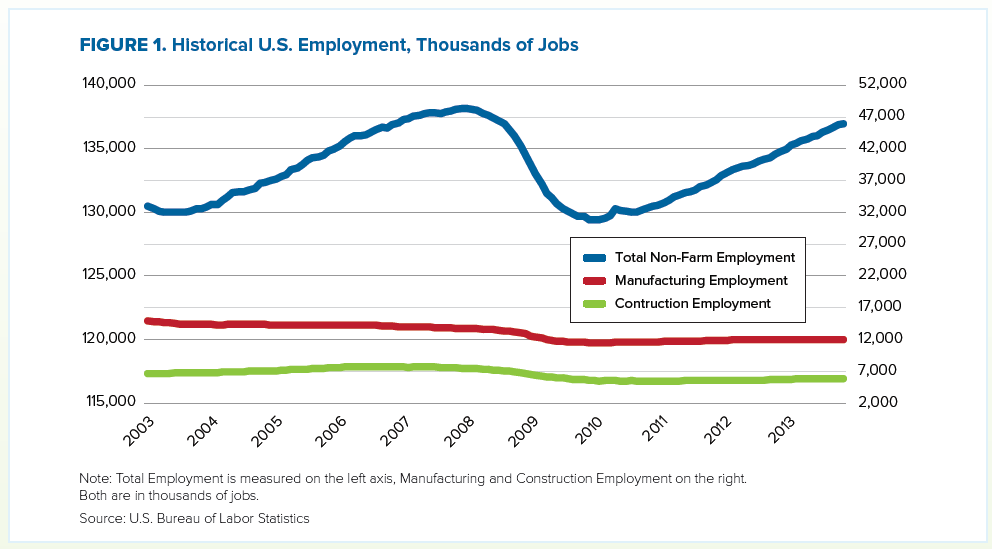BLUEGREEN ALLIANCE
Executive Summary
As the United States continues a slow but steady recovery from the
recession triggered by the financial crisis of 2007 and 2008, investment
is desperately needed to fuel economic growth and job creation—
including modernizing large swaths of our nation’s infrastructure.
Repairing the system of distribution pipelines that deliver natural gas
to homes and businesses offers an opportunity to drive significant
investment in our economy. Doing so will help to fix a critical part
of our aging infrastructure while creating jobs and cutting global
warming pollution—a winning proposition for both the
environment and the economy.
While the repair and replacement of natural gas distribution pipes is
underway in many parts of the country, the nation won’t see an overhaul
of the estimated 9 percent of distribution pipeline comprised of aging,
leak-prone materials for three decades at the current rate of progress.
This report considers an alternative, accelerated scenario whereby this
rate of repair and replacement activity would be tripled—a goal not
inconceivable were ideal policy and finance mechanisms in place.
The report findings include:
- Accelerating the timeframe of pipe replacement would increase Gross Domestic Product (GDP) by over $37 billion by 2024, leaving GDP $30 billion higher in that year compared to the 30-year repair and replacement schedule.
- By the end of the 10-year replacement timeline, over 313,000 people would be employed, with nearly 250,000 more jobs created than in the 30-year repair and replacement scenario.
- Over three decades, the accelerated 10-year scenario would save nearly $4.4 billion worth of gas. Those savings are $1.5 billion more than under the current rate of repair and replacement.
- The faster replacement rate prevents an additional 81 million metric tons of greenhouse gases from being emitted into the atmosphere, roughly equivalent to taking 17 million cars off the road for one year.
Introduction
The United States continues to slowly climb out of the recession triggered by the financial crisis of 2007 and 2008. As measured by Gross Domestic Product (GDP), overall economic growth is on the rise again, and the stock market is reaching new heights. At the
same time, however, the economy struggles to create jobs. While the unemployment rate is below 7 percent for the first time since 2008, as Figure 1 below shows, overall employment— and employment in the construction and manufacturing sectors—remains below their pre-recession levels. Part of the reason for this is that, despite historically low interest rates, money spent on machinery and other physical capital used to create goods and services in the U.S. economy also remains below pre-recession levels.
At the same time that investment is desperately needed to fuel economic growth and job creation, investment is also desperately needed to update and repair large swaths of our infrastructure. The American Society of Civil Engineers (ASCE) produces assessments of the state of the U.S. infrastructure and regularly gives it barely passing grades. In its most recent 2013 infrastructure scorecard, our infrastructure, and the subset of energy infrastructure including our natural gas distribution systems, got an overall score of “D+.” This is sadly a minimal improvement from the previous scorecard in 2009, which gave America’s overall infrastructure systems a “D” grade.
In this economic environment, we also face the challenge of addressing the looming problem of global climate change, driven mainly by anthropogenic emissions of greenhouse gas pollution. The scientists of the Intergovernmental Panel on Climate Change have amplified their warning that humans burning fossil fuels are pouring greenhouse gases into the atmosphere at a rate that is causing an unprecedented and likely devastating threat to civilization and the biosphere.
We must face the news that after declining by 12 percent since 2005, U.S. carbon emissions rose by 2 percent in 2013.3 Despite the substantial dangers posed by a disrupted climate, some claim that the economic recovery is too fragile to embark on major efforts to reduce emissions. Others, however, are noting the opportunity for new sectors, like the clean economy, to power a robust and healthy 21st century economy.
Repairing the system of distribution pipelines that deliver natural gas to homes and businesses offers an opportunity to address all of these issues at the same time. A significant investment in our domestic economy—one that will help fix a critical part of our aging infrastructure while simultaneously creating jobs and cutting global warming pollution— replacing aging and leak-prone pipes in the natural gas distribution system is a winning proposition for both the environment and the economy.
About the BlueGreen Alliance
www.bluegreenalliance.org
“The Blue Green Alliance is a national, strategic partnership between labor unions and environmental organizations dedicated to expanding the number and quality of jobs in the green economy.”
Tags: BlueGreen Alliance, Natural Gas







 RSS Feed
RSS Feed